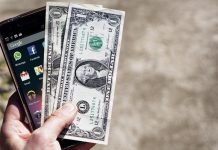To not fall for marketers' bait, you have to count, read, and monitor prices.
Check the expiration date of the goods.
Sometimes a store promotion is a way to sell stale goods quickly. There is nothing wrong with that. On the contrary, you buy a still usable product at a bargain price, and the supermarket avoids losses.
But some factors can negate the savings:
- The packaging is too big. You won't have time to eat or use up all the goods until they go bad.
- There is too little time left before the expiration date. If it expires tomorrow, you may not be able to use the product on time.
- Incorrect storage conditions. The shelf life is determined based on the optimal temperature, humidity, lighting. If the conditions are not met, the goods may deteriorate before the expiration date.
Therefore, consider whether you will have time to use up the product and be prepared for unpleasant surprises. You can return a damaged product.
That, in the end: if the product is all right, and you have time to eat or spend up to the expiration date.
Read also: How to Save on Clothes Without Sacrificing Style
Appreciate your own strengths
Clothing and footwear stores have long been using "three things for the price of two" promotions. But over the years, the numbers in the ad are increasing, and you can already find offers "six things for the cost of three."
On the surface, the promotion appears to be profitable. And it will be so if you are delighted with the store's store's assortment and can easily pick up six ideal items of about the same cost. If not, you won't be able to save.
Typical story: you find great pants and a T-shirt, and you don't really like anything more. But the promotion does not allow you to leave the store, and you cut circles around the trading floor in search of something else to “finish off” the number of products to the discount. As a result, you buy the things you like at full price, and as a gift for the promotion, you get something that you would not have paid attention to in another situation.
You didn't spend too much, but the closet was filled with useless things - it didn't turn out so profitable.
With groceries, the idea of buying "three for the price of two" is primarily about shelf life. You manage to eat or use up - great. If not, then the benefit is questionable. For example, buying two fresh yogurts for the price of one is a good idea. But getting five packs of baking soda for the price of three if you only use it for baking pancakes for Shrovetide is already questionable.
With the result that: if each purchase is necessary, important, and dear to his heart, the action item. It can also be done like this if you team up with someone and breakthrough six (or as many as is required under the terms of the promotion) things in one check for two or three people and divide the spending.
Check the cost of analogs.
This method does not work with clothing or when you need a specific product from a certain company. But it is suitable for situations where you are only interested in the characteristics of the product.
Let's say there is a can of canned food at the stand worth 100 rubles with a 10% discount, and next to it - the same quality, but for 85 rubles. It will be more profitable to buy the second one even without any discounts. The more expensive the product, the more profitable it is to check the analogs.
Check the price before the discount.
It happens that stores create the illusion of discounts to spur buyers' interest and, at the same time, earn a little more on them. Today the goods are sold with a 50% discount for 100 rubles, and yesterday it cost 200. There is just a nuance: the day before yesterday it would have cost 70 rubles without any discount.
In online stores, price changes can be tracked using special extensions. It is more difficult to do this in offline outlets: you will not go to the same store every day to track price dynamics.
Sometimes you don't need to dig deep - just pry the sticker with the new price on the label with your fingernail and see the old one.
If we are talking about a more or less large clothing or footwear store, the same Internet will come to the rescue. Check out the prices on the website. Find reviews for a specific product by an article on third-party sites - they often write what they bought and how much.
For electronics, cosmetics, and other goods, use price aggregators like Yandex. Market, Sravni.com, Price.ru. It's even easier with food: install the Foodie app. It will tell you if the price you are offered is favorable and that stores the goods are even cheaper.
Read the information on the price tag carefully.
It often happens that the cost indicated on the price tag in large letters is not intended for everyone. To do this, you need to comply with additional conditions: have a store card, take related goods. And the price for the average buyer is written in small print in the corner of the price tag and can be frighteningly high.
Also read: What to do When You Have Financial Problems
For example, an electronics store lures customers with a low price for a new smartphone. But it turns out that it works if you buy headphones, which cost 90% of the discount amount. For those who need headphones, the promotion is profitable. The rest will have to either pay full price or buy unnecessary headphones and save a small amount in the end.
Calculate the cost per gram and kilogram
By default, it seems that the larger the packaging, the more profitable it is to buy the product. But even without any shares, sometimes it turns out that this is not so.
Adapted and translated by The Cop Cart Staff
Sources: Life hacker







